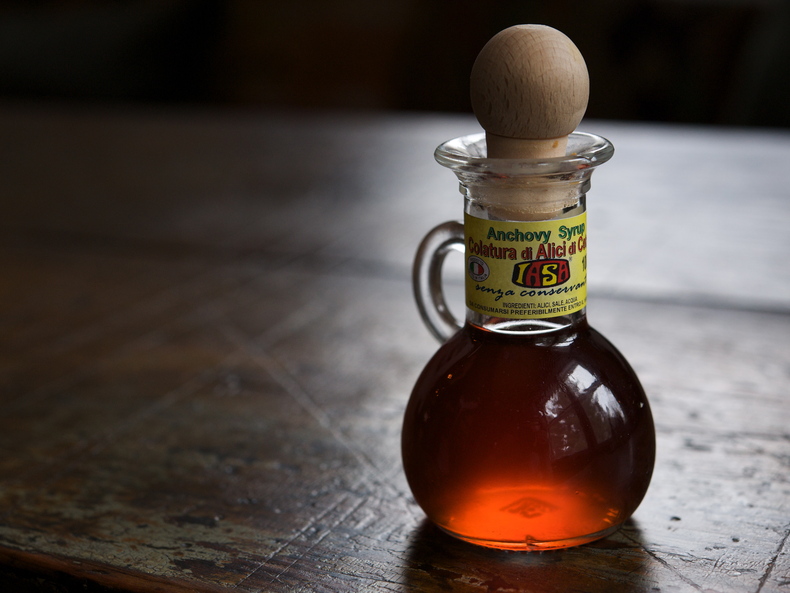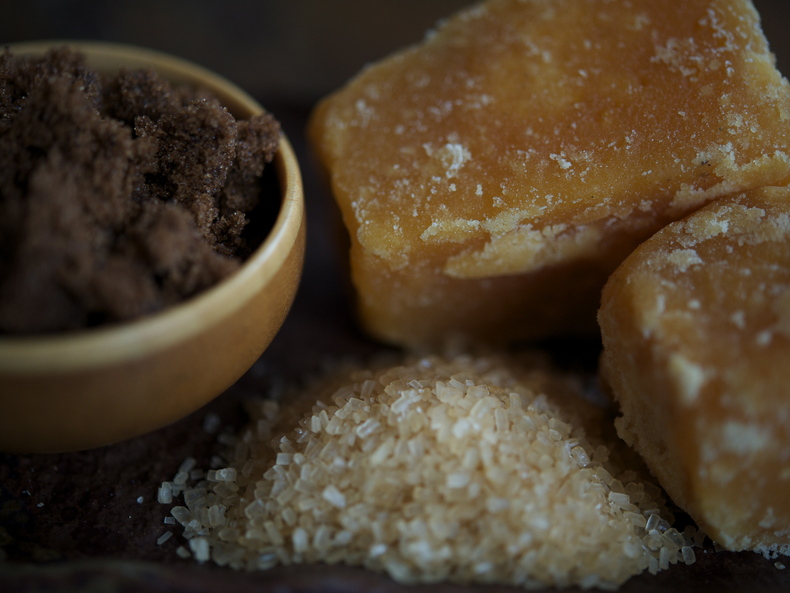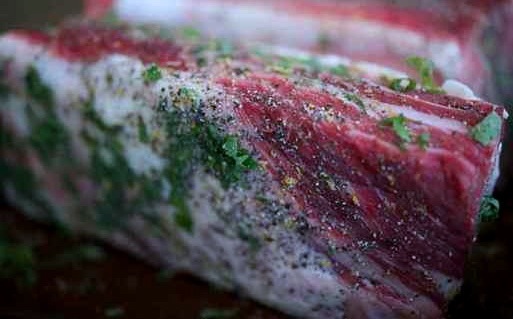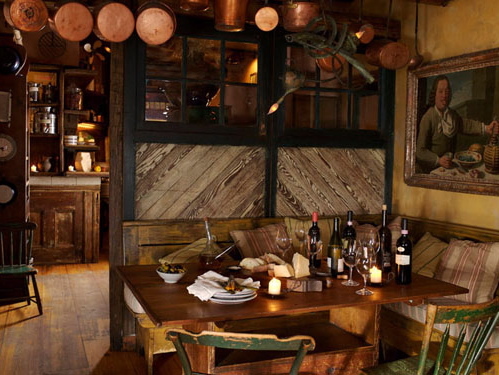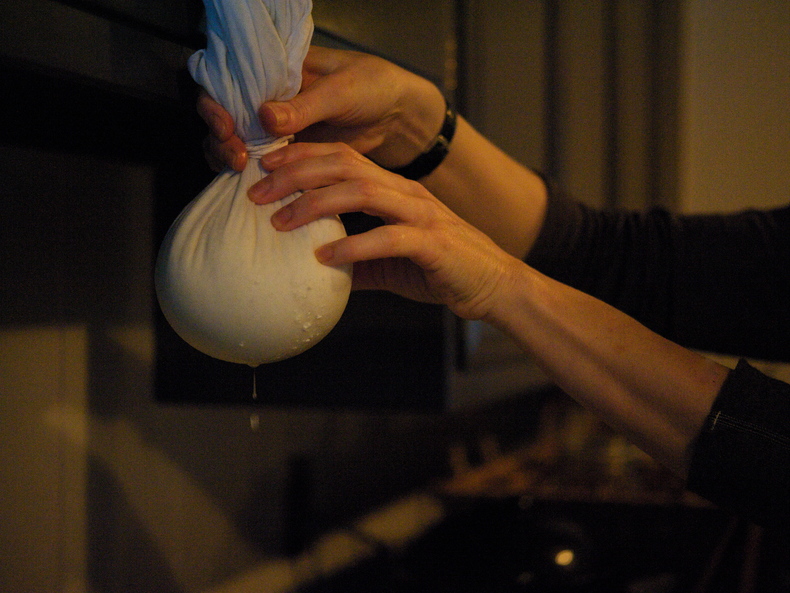Have you discovered colatura di alici, an amber elixir of anchovy made around Italy's Amalfi coast for the last 2,000 years? Slow Food International has officially declared it a "protected" ingredient. (I ordered my first bottle online here.) When anchovies are salted for curing, they’re layered in wooden barrels, then pressed and weighted down. From small holes in the barrels drips this salty, funky syrup—thus the word colatura, from colare, “to drip” in Italian. Somehow, although more concentrated, it’s a bit less overtly fishy than anchovies. And it’s not quite as rank or muddy (or old gym sock-y) as Asian fish sauce—an essential pantry item, by the way. It's the modern version of garum, a fermented fish liquid (sometimes made from just their blood and guts) that was a sort of salt substitute in ancient Rome. The process was so smelly that production was apparently limited to outside the city walls!
Read More...
February 2010
2.17.10 Interiors
Have you ever seen Woody Allen's movie by that name? It's among my favorites of his (along with Crimes & Misdemeanors, Hannah & Her Sisters and Annie Hall) and is sort of an ode to Ingmar Bergman. Geraldine Page is absolutely brilliant as a neurotic/depressive/perfectionist interior designer. Perhaps I could use her help in the upcoming remodel of our bathroom. It's simply got to be done. The toilet is literally sinking into the floor. We updated this tiny room in our snug cottage (circa 1935) when we first moved in 5 years ago, adding some grey paint (the same Benjamin Moore Iron Mountain that is featured throughout the house), a burlap shower curtain and a few simple, decorative touches—striped Turkish towels, a large Mexican ceramic owl, a couple of small paintings. I also feel the lack of a bathtub keenly since we no longer have our place in the city. So we’re resolved to make some changes, even though I can’t imagine how we’re going to “make do” with our bathroom out of commission. I’m pondering the idea of adding some color, even though the room is small, because the rest of the house is mostly quite neutral.
Read More...
Read More...
2.15.10 Worth My Salt
I love this expression and its somewhat arcane origins. Salt once had such value that wages were paid in it. I, for one, could not live without the stuff. Having taken you through alternatives to sugar yesterday, I suppose the correct symmetry would have me talking about salt substitutes here, such as they are—soy sauce or even Mrs. Dash, I suppose. But instead I'm going to wax lyrical about my favorite salts. Oh, come off it, you're saying, right? Once it hits your tongue, one salt's the same as the next. Not so. Both texture and taste can vary quite a bit from one salt to another. There's always kosher on hand in my kitchen but it's relegated to the back of the cupboard. I cook with fine sea salt and use all types of flavored and finishing salts to accent dishes. Call me a salt snob, if you will. I'll take it as a compliment.
Read More...
Read More...
2.14.10 Sweet On You
I must confess, I have something of a sweet tooth. I can remember giggling over a box of See's candies with my (diabetic!) grandfather as we stuffed our mouths with chocolate. But I now know sugar is not really good for me. It causes inflammation which I experience as joint aches, and it makes my skin break out. Why? Refined sugar raises the insulin level in your blood and this depresses the immune system. This, in turn, compromises your ability to fight disease. It can cause weight gain since insulin promotes the storage of fat. Refined sugar contains no vitamins or minerals so in order for it to be metabolized it draws on the body's reserve of vitamins and minerals. When these reserves are depleted, metabolization of cholesterol and fatty acid is impeded, contributing to higher LDLs (harmful cholesterol) and promoting obesity due to higher fatty acid storage around the organs. Sugar consumption is also associated with copper deficiency, periodontal disease, diabetes, coronary heart disease, pathological changes to the liver and pancreas, hormonal imbalance, fluid retention, headaches, and on and on. Do you need more reasons to decrease your sugar intake? I’m not telling you to never again enjoy something sweet, but to consider eradicating white sugar in favor of these healthier options. These, too, should be eaten in moderation (yes, that again!)...
Read More...
Read More...
2.13.10 Ribs Redux
You may remember I wrote a while back about the red miso short ribs I invented, using a more classic preparation as a template. I'm please to say they were singled out among the editors' picks this week on Food52, a very fun cooking site I recommend you visit. Don't be put off by the use of slightly more esoteric ingredients like the miso, or mirin (a sweet Japanese cooking wine) or daikon (a large white radish). These can all be found at your local health food market, maybe even Whole Foods, or definitely an Asian speciality market. This is great cold-weather cooking. As with the other short ribs recipe, it's best if you plan ahead so you can have a day to marinate, and another to chill the cooked ribs which makes removing the fat much easier. So without further ado, I present my recipe.
Read More...
Read More...
2.12.10 Bucolic Dining
Bond Street is no longer the tucked-away, cobblestoned street of artists' studios it once was. The arrival of Herzog & de Meuron’s overwrought luxury residences and a slew of expensive boutiques signaled a definitive transformation. But it still retains its charm, in no small part because of Il Buco. What began in 1994 as a little antiques shop is now this wonderful Italian restaurant where candelight bounces off rows of hanging copper pots, illuminating dark paintings and the smiles of sated guests. Rustic wooden tables and cozy banquettes make for leisurely dining. The place attracts a nice crowd of locals and regulars that creates a buzzy but not pretentious scene. The eclectic menu is Italian-inflected, with a nod to Spain’s tapas-style grazing. I have found the food to be uniformly delicious. And although it’s hard to make the meal the main focus when you’re surrounded by a gorgeous gaggle of old friends who rarely come together now—sharing stories and secrets and laughs at full volume—it’s also impossible not to stop and savor Il Buco’s inventive flavors. I always look forward to the bread—chewy, yeasty and crusty. Its peerless accompaniments of peppery Umbrian olive oil, Sicilian sea salt and balsamic vinegar from Modena are from Il Buco’s own brand and are available for sale in the restaurant and here.
Read More...
Read More...
2.11.10 Jewel in the Crown
As you can see, I'm not the only one wild about citrus. This was one of the many monkeys we encountered on our honeymoon in India two years ago. What a magical trip it was! I recommend that you get there in this lifetime. I've already written a bit about the trip and floating through the southern canals, but I wanted to share a few more of G's beautiful photos that document the color and charm of this amazing, multi-faceted place. We journeyed from Kerala to the mountains, to Mumbai, and then on to Rajasthan. We stayed on the beach, on a houseboat, in a fantastic tent on the edge of a tiger preserve, at the Taj in Mumbai (exactly one year before it was assaulted by terrorists) and in an 18th century palace in the hills outside Udaipur. It's hard to convey the experience of being in India: the weight of history, the sublime palette, the mass of humanity, the ornamentation and decay. As Mark Twain famously said, "India is the cradle of the human race, the birthplace of human speech, the mother of history, the grandmother of legend, and the great-grandmother of tradition. Our most valuable and most astrictive materials in the history of man are treasured up in India only!" Once the jewel in the crown of Queen Victoria, India is still one of the planet's most rare and precious gems.
Read More...
Read More...
2.10.10 Liquid Love
Some people, it seems, just can't slurp down enough soup these days. It really is the perfect thing for cold weather, a warming bowl of comforting goodness. Below, you'll find recipes for four, count 'em, low-fat and nutritious soups you can whip up without any bother whatsoever. That's all this post is about: soup. Get it while it's hot.
Read More...
Read More...
2.9.10 Rest Up
I get so distracted with the whole cooking and eating thing that I sometimes forget this blog is supposed to extend beyond that. Let me pick my head up from my plate for a moment and share some of my other passions. I know I sound a little like Joan Crawford when I say this ("No more wire hangers!!"), but I only sleep on linen sheets. Or rather, I prefer to sleep on linen sheets only, with perhaps the odd cotton voile sheet tossed into the mix in summer. I discovered linen sheets about a dozen years ago when I went to an Archipelago sample sale. Around the same time, I began shopping at the now-defunct, much-missed SoHo boutique Ad Hoc. (One of the owners, a marvelously chic Englishwoman, now works at Aero on Broome Street.) Anyway, this made for a perfect storm of linen sheets, and I have never looked back. I love linen's organic quality; the way it gets softer and softer; its wonderful dry hand. I would never iron my linen sheets. I like that slightly rumpled quality. I hate a starched bed. Sateen sheets make me want to vomit. (They are so slimy!) And don't talk to me about thread counts. Egyptian cotton? Puh-leeze. Want to know what the Egyptian elite were really into? In 1881, the tomb of the Pharaoh Ramses II was opened and his linen wrappings were discovered, still in a state of perfect preservation after more than 3,000 years.
Read More...
Read More...
2.8.10 Curds & Whey
This little Miss Muffett definitely enjoys eating freshly made curds. And so will you, when you make your own paneer (also spelled panir). This is that soft white cheese used in Indian cuisine. You probably know it from saag paneer, the Indian cousin of creamed spinach. Making paneer is quite similar to making ricotta, if you've ever done that. Even easier. It's just a simple coagulation of milk through the use of acid; lemon juice, in this case. The milk "breaks," separating into fluffy white curds and cloudy liquid whey. You gather the curds up into a clean cloth (cotton towel or cheesecloth) and hang it so that liquid drains away. If you leave it fairly soft—with a bit more liquid—it's known as chenna; taken to a firmer stage, it becomes paneer. It's delicious in rich curries, fritters, or simply cooked with vegetables like peas, chiles or greens.
Read More...
Read More...






